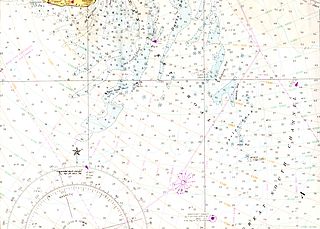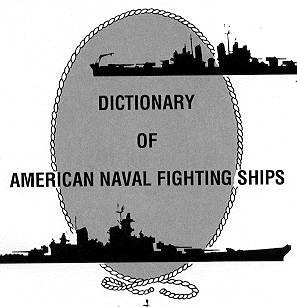
A lightvessel, or lightship, is a ship that acts as a lighthouse. They are used in waters that are too deep or otherwise unsuitable for lighthouse construction. Although some records exist of fire beacons being placed on ships in Roman times, the first modern lightvessel was off the Nore sandbank at the mouth of the River Thames in England, placed there by its inventor Robert Hamblin in 1734. The type has become largely obsolete; lighthouses replaced some stations as the construction techniques for lighthouses advanced, while large, automated buoys replaced others.
USS Captor (PYc-40), briefly the seventh ship to bear the name USS Eagle (AM-132), was a Q-ship of the United States Navy.
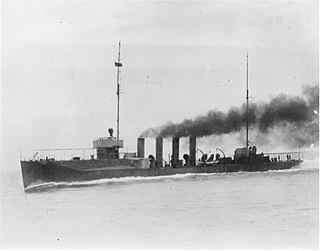
The O'Brien class of destroyers was a class of six ships designed by and built for the United States Navy shortly before the United States entered World War I. The O'Brien class was the third of five classes of destroyers that were known as the "thousand tonners", because they were the first U.S. destroyers over 1,000 long tons (1,016 t) displacement.

USS Ericsson was an O'Brien-class destroyer built for the United States Navy prior to the American entry into World War I. The ship was the second U.S. Navy vessel named in honor of John Ericsson, the Swedish-born builder of the ironclad warship USS Monitor during the American Civil War.

A sister ship is a ship of the same class or of virtually identical design to another ship. Such vessels share a nearly identical hull and superstructure layout, similar size, and roughly comparable features and equipment. They often share a common naming theme, either being named after the same type of thing or with some kind of alliteration. Often, sisters become more differentiated during their service as their equipment are separately altered.
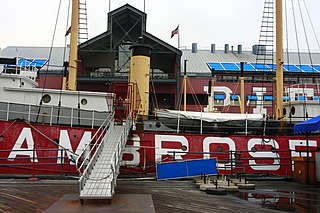
Lightship Ambrose was the name given to multiple lightships that served as the sentinel beacon marking Ambrose Channel, New York Harbor's main shipping channel.
USS Telamon (ARB-8) was planned as a United States Navy LST-542-class tank landing ship but was converted as one of twelve Aristaeus-class battle damage repair ships built for the Navy during World War II. Named for Telamon, she was the only US Naval vessel to bear the name.

United States lightship Nantucket (LV-112), also known as Lightship No. 112, Nantucket, is a National Historic Landmark lightship that served at the Lightship Nantucket position. She was the last serving lightship and at time of its application as a landmark, one of only two capable of moving under their own power. She served as the lightship for such notable vessels as SS United States, RMS Queen Mary, and SS Normandie.
The Nantucket Lightship LV58 was a lightvessel of the United States Lighthouse Board from 1894 to 1905. During those years, she primarily served the coast of Fire Island in New York and the Nantucket Shoals, though she was a relief vessel and served as needed in other locations off the northeast coast as well. From 1898 to her sinking in 1905, she was occasionally used as a lighthouse tender.

LV-117 was a lightvessel of the United States Lighthouse Service. Launched in 1931, she operated as the Nantucket lightship south of Nantucket Shoals. Moored south of Nantucket Island, Massachusetts, the lightship was at the western part of the transatlantic shipping lane and the first lightship encountered by westbound liners approaching New York Harbor. On May 15, 1934, one of these liners, RMS Olympic, rammed and sank LV-117, killing seven of her crew.
USS Penobscot (ATA-188/ATR–115) -- a Sotoyomo-class auxiliary fleet tug—was originally placed in service by the U.S. Navy as USS ATA–188 until she was renamed USS Penobscot (ATA-188) 16 July 1948. She served in the Pacific Ocean during World War II, and on the U.S. East Coast after the war’s end. She was finally decommissioned in 1971.

The Nobska was a steamship that plied the waters of Nantucket sound as part of The Woods Hole, Martha's Vineyard and Nantucket Steamship Authority's fleet between 1925 and 1973 as a ferry. She was eventually scrapped in 2006 despite efforts to save her. She was America's last East Coast coastal steamer, had been on the National Register of Historic Places in Maryland, and had been considered one of America's 10 most endangered maritime resources by the National Maritime Alliance and National Trust for Historic Preservation.
USS Lehigh (AK-192) was an Alamosa-class cargo ship that was constructed by the US Navy during the closing period of World War II. She was declared excess-to-needs and returned to the US Maritime Commission shortly after commissioning.
The fifth USS Relief was a lightship that served in the United States Navy from 1918 to 1919.
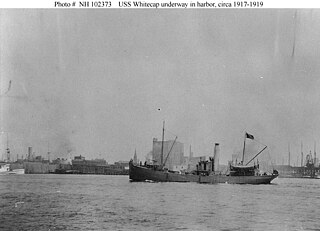
USS Whitecap (SP-340) was a United States Navy patrol vessel in commission from 1917 to 1919.
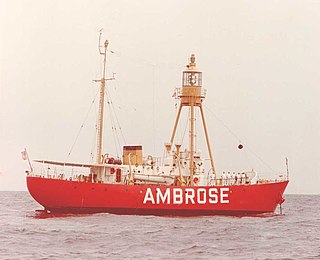
The United States Lightship WLV-613 (Ambrose) was a lightvessel commissioned in 1952 that became the last lightship to mark the Ambrose Channel. She was replaced by a Texas Tower lightstation on 24 August 1967.

The USS Banner was originally U.S. Army FS-345 serving in the Southwest Pacific during the closing days of World War II as one of the Army's United States Coast Guard crewed ships. In 1950 the ship was acquired by the Navy and converted into a light auxiliary cargo (AKL). In 1967 the ship was converted for electronic intelligence and reclassified as Auxiliary General Environmental Research (AGER).

